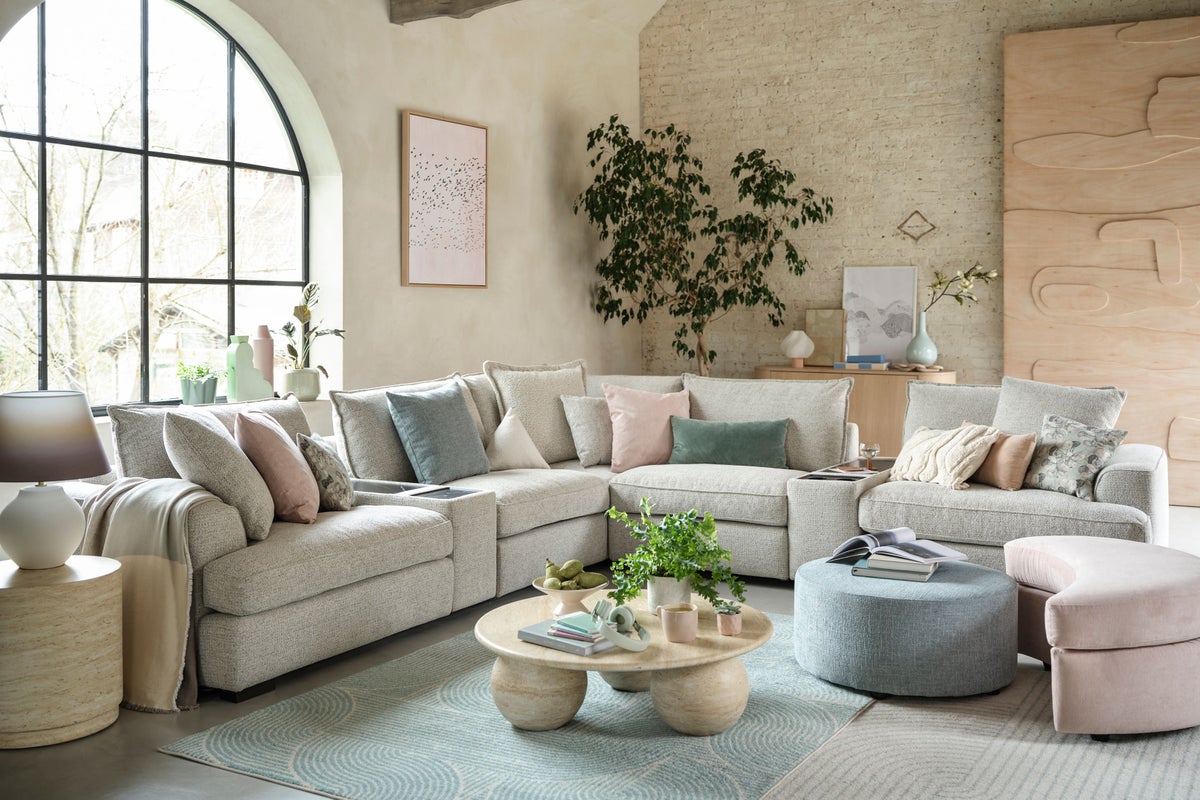
When it comes to home comforts and sinking into a seat, embracing the chubby aesthetic is the latest fashion and style trend… think full-figured furnishings which hug you with their oversized proportions.
“After years of sleek minimalism and hard edges, people are gravitating towards furniture that feels softer and more human, explains Jessica Hubner, founder of UK furnishings brand Collection Seven.
‘Fat furniture’ with its rounded silhouettes and generous proportions offers exactly that… it’s bold, sculptural and surprisingly comforting.”
Indeed, she says there’s a growing appetite for statement pieces that feel like art… but function beautifully in everyday spaces.
“There’s an emotional pull to these shapes – they echo the human form and create a sense of ease and warmth that more angular styles often can’t,” says Hubner.
“People want their homes to feel expressive and inviting, and this trend taps into that perfectly.”
Kellie Wyles, head of upholstery at DFS, agrees: “The growing popularity of ‘fat furniture’ reflects a broader shift towards creating interiors that feel calm, inviting, and effortlessly liveable.
“These generously proportioned pieces strike a balance between indulgent comfort and everyday practicality – offering ample space to host guests in a relaxed, welcoming atmosphere.”
Characterised by oversized silhouettes, deep seats, plush cushioning, and expansive footrests, Wyles says this trend turns the home into a personal sanctuary.
“Soft curves, neutral tones, and natural materials like wood and linen enhance the sense of serenity, grounding the space in warmth and tactility.”
This trend is also driven by a desire for wellness, suggests Wyles. “Both physical and emotional. As our homes become havens from busy modern life, people are increasingly drawn to furniture that promotes rest, relaxation, and a sense of escape.”
How to introduce voluptuous shapes at home
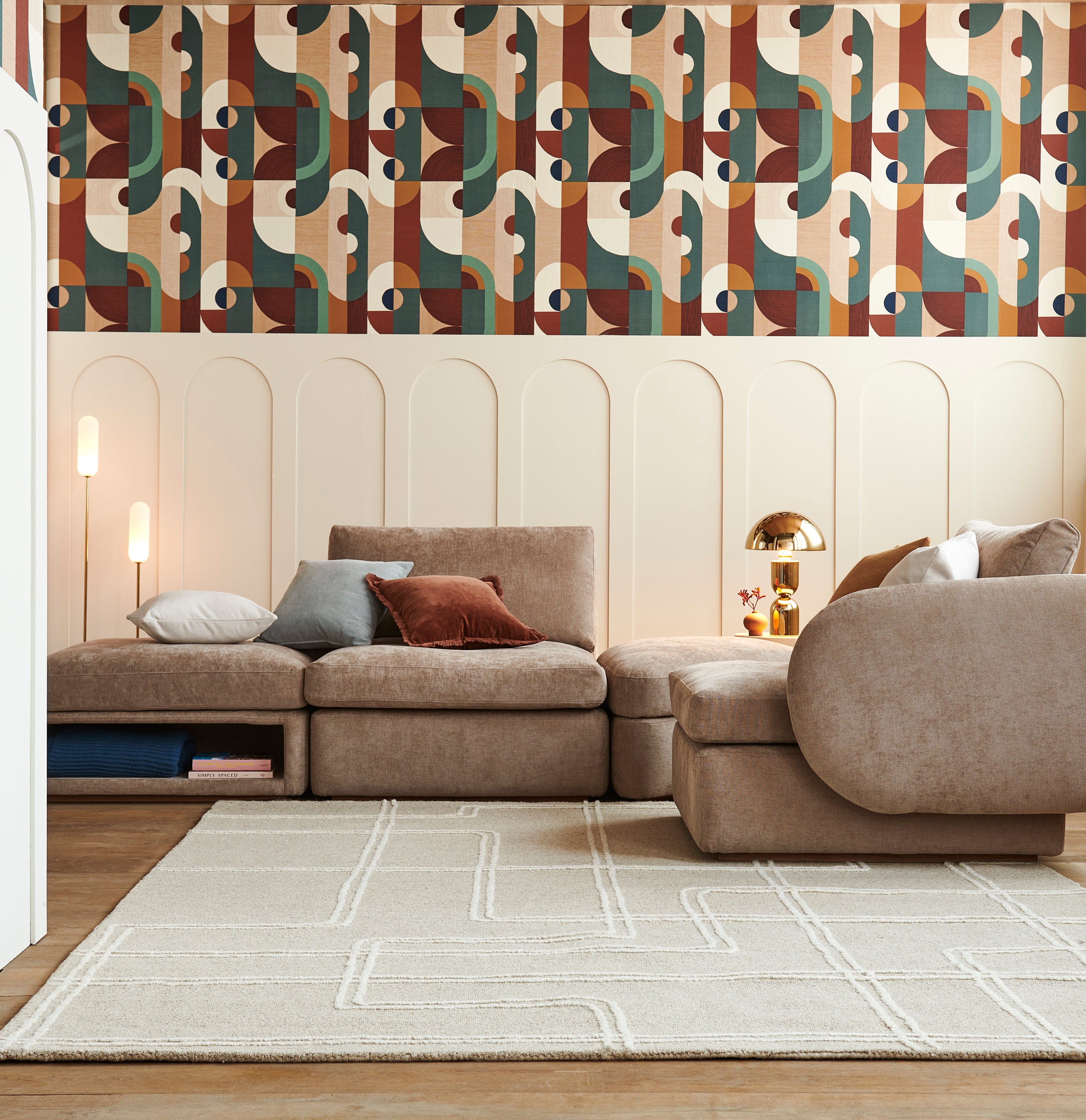
You don’t need to overhaul your entire interior to embrace this look, says Hubner. “One well-placed piece can completely transform a space.
“A curved armchair in a reading corner, a chunky coffee table in the lounge, or even a sculptural foot stool can bring that ‘soft statement’ into your home without overwhelming it.
Or you can really go for the trend with a statement item, such as a Seventies-inspired sofa. “The key is to let these pieces lead,” advises Hubner.
“Curved forms naturally draw the eye, so give them space to shine – they’re surprisingly versatile when styled with more classic items.”
Materials that compliment curves
Texture is everything when it comes to curved furniture, highlights Hubner. “We tend to lean into fabrics that enhance softness – think bouclé, velvet, and rich leathers.
“These not only emphasise the shape, but add a layer of comfort and visual interest.”
But it’s not just about soft materials, underlines Hubner. “Curves also look incredible in lacquered finishes, marble, or warm-toned woods.”
She says combining tactile fabrics with polished accents is a way to create depth and balance, while keeping the shape as the focal point.
The art of styling ‘fat furniture’
When styling voluminous furniture, Hubner says to give it room to breathe. “These pieces are inherently sculptural – they don’t want to be crammed into corners or surrounded by clutter.”
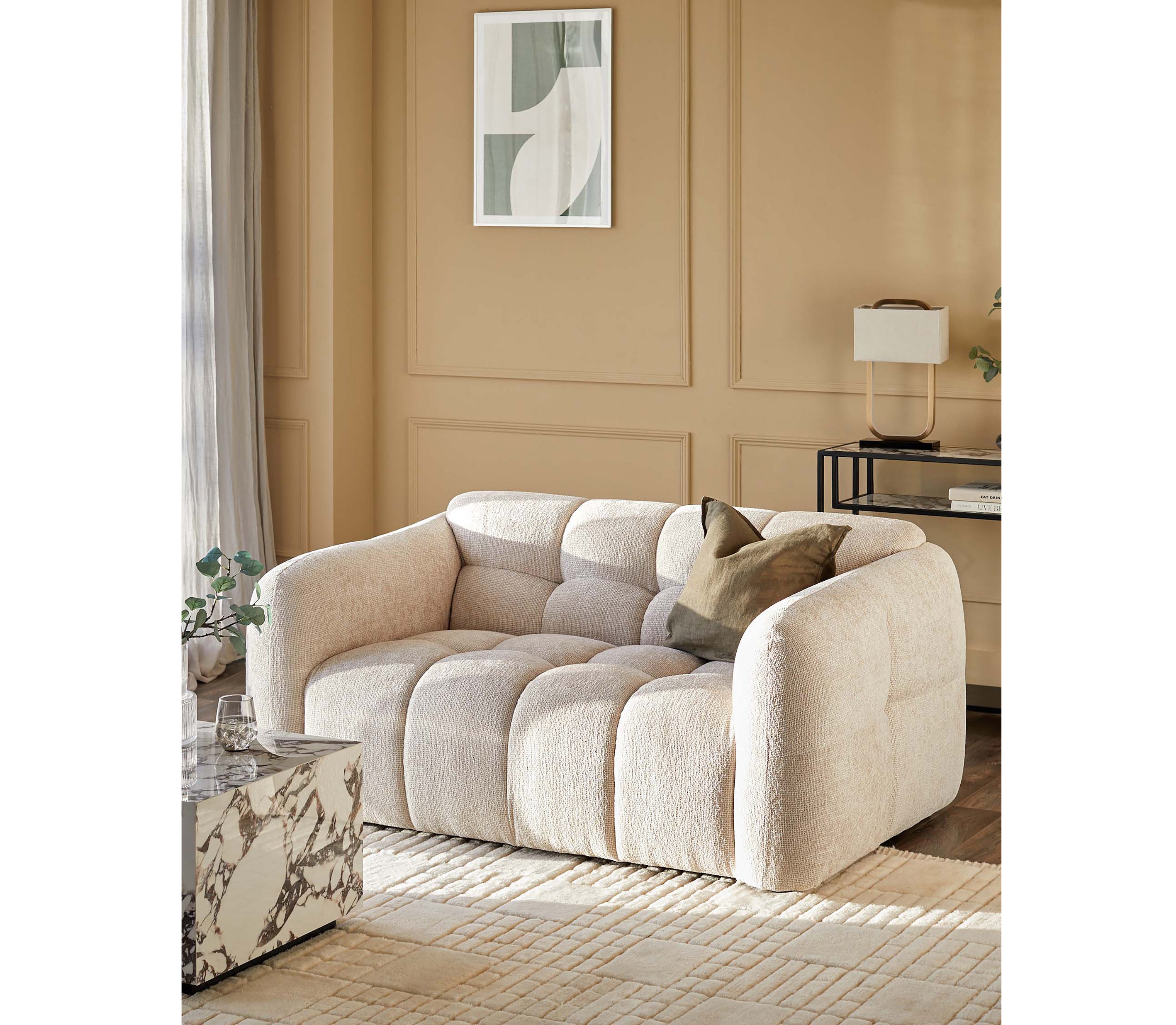
The designer says to pair them with simpler, more linear items to let the form stand out. “For example, a plump sofa works beautifully with a slim, metal side table or a clean-lined floor lamp.”
If you’re working with a smaller space, she says balance is key. “Use mirrors, lighting and contrasting textures to keep the room feeling open and intentional.
“And don’t be afraid to mix and match eras or styles – a curved chair looks just as good in a Victorian terrace as it does in a modern flat.”
Where to place ‘fat furniture’
Statement pieces work best where they’ll make the most impact, suggests Hubner. “Living rooms and open-plan spaces are ideal for larger curved pieces, like sofas or lounge chairs.
“In more private areas like bedrooms or home offices, a rounded bench or pouffe can add a soft touch without dominating the space.”
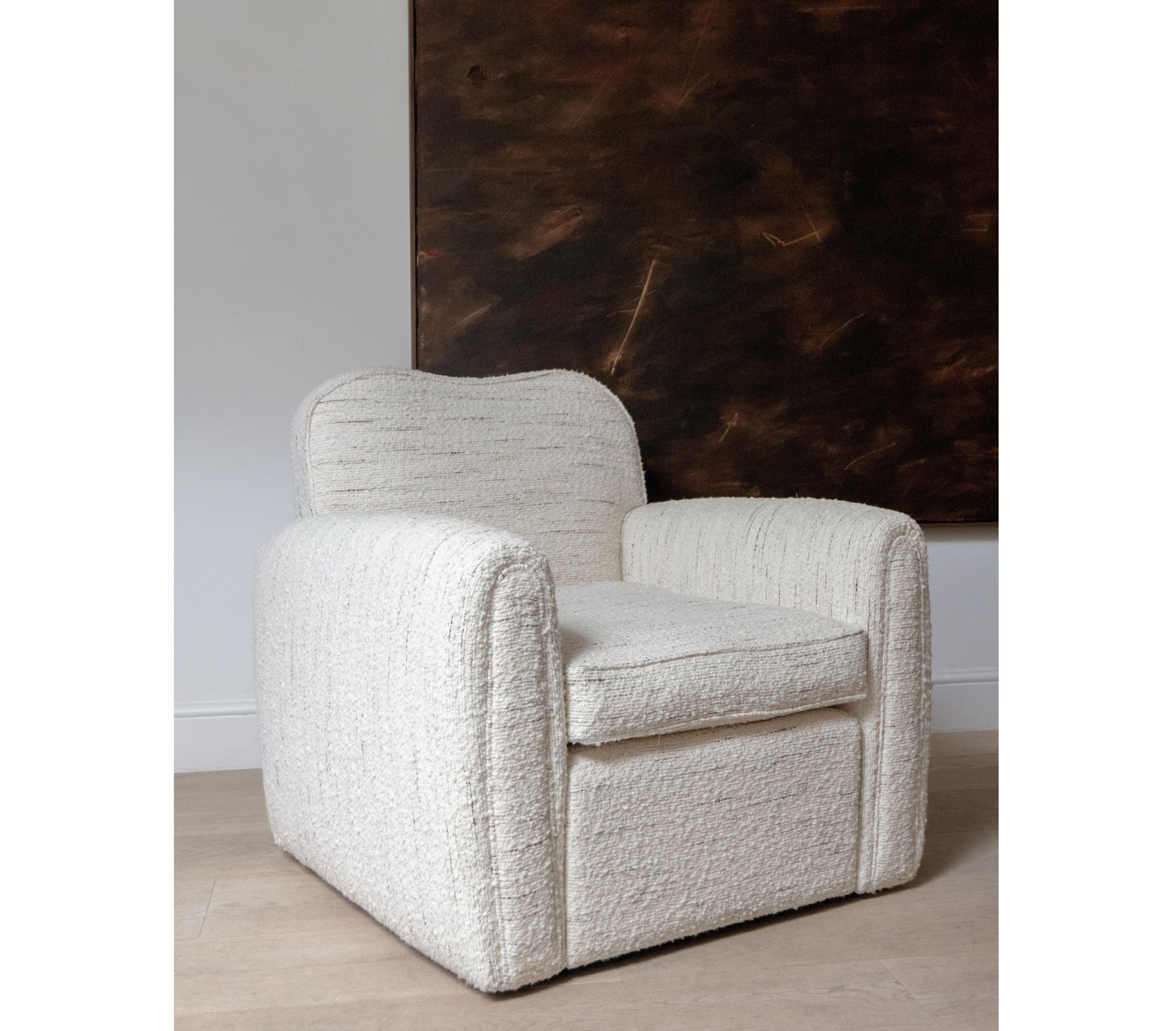
She continues: “Even in compact homes, you can work the trend with smaller-scale pieces. Look for items with volume but not necessarily huge footprints – a curved armchair, or rounded bedside table can still capture the look.”
Where it works best
For anyone new to the trend, Hubner says to start with an armchair. “It’s low-commitment but high impact and incredibly easy to style.
“Sofas are a natural next step if you’re ready for more of a statement. Curved furniture also works beautifully in communal areas – family rooms, dining spaces, or anywhere you want people to feel at ease.”
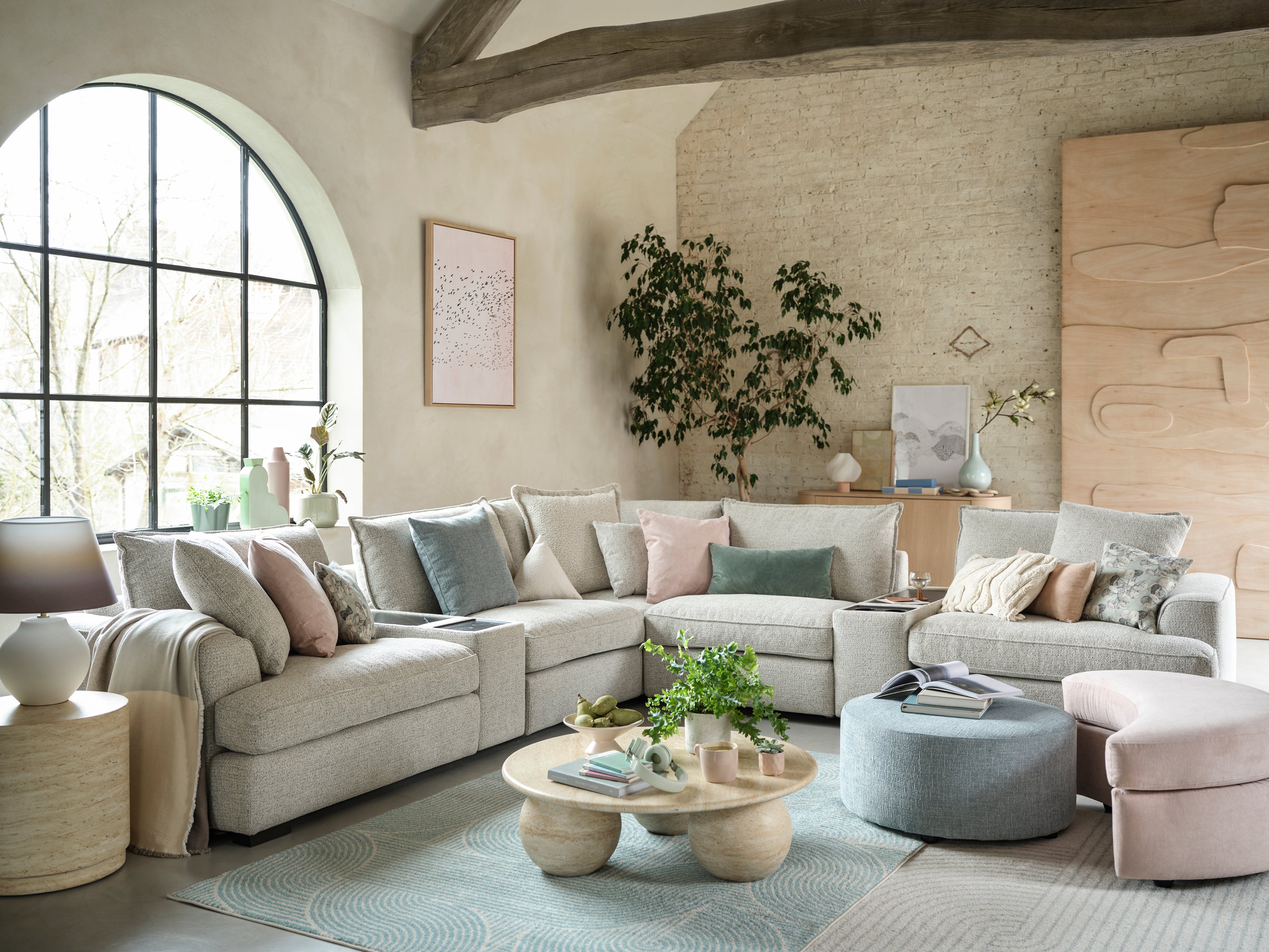
In addition, home cinema sofas are taking their cue from the ‘fat furniture’ trend, says Wyles. “An oversized corner sofa perfectly embodies this movement, combining luxurious proportions with smart, considered features such as hidden cup holders, built-in charging ports, and Bluetooth.
“Designed to enhance comfort and support modern living… it’s all about creating a sanctuary where wellness and indulgence go hand in hand.”
‘I pleaded with him not to run the story’: Eunice Olumide opens up about double life
5 GP-backed ways to transform your wellbeing this summer
How to spot the early signs of a cataract
Time to stop celebrating the Mitford sisters – they are Downton Abbey with Swastikas
Penny Lancaster reveals the King’s kind words which helped her confidence
Plastic Free July: 5 easy swaps to reduce plastic in the garden







